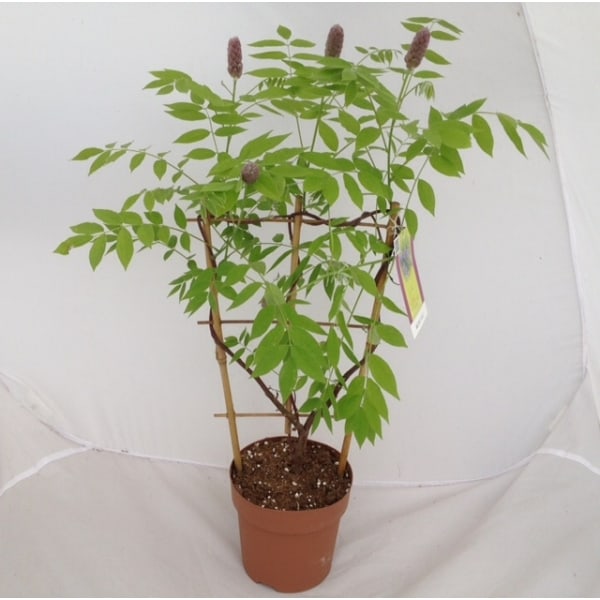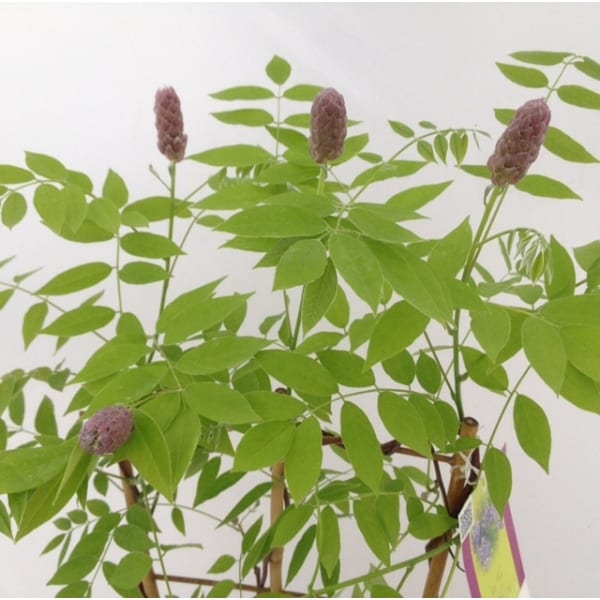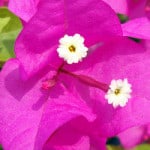Last updated on January 24th, 2022
Our site is reader supported, this means we may earn a small commission from Amazon and other affiliates when you buy through links on our site.
Dwarf Wisteria ‘Amethyst Falls’
Wisteria is available in many cultivars with most of them growing incredibly large, reaching heights of 30ft and spreads of 60ft. But if you don’t have a large garden or an ideal position for such a large Wisteria there is another just as spectacular variety.
The Wisteria Amethyst Falls is a fully hardy, deciduous and dwarf cultivar. It produces masses of lilac-blue, petulant, sweetly scented flowers upon its twining stems from late spring through to mid-summer. Mature plants in hot summers can also produce velvety, green seed pods after the flowers. This cultivar usually flowers a lot sooner than other cultivars and can often be purchased already in flower.
Avoid purchasing seed grown Wisterias as they can take up to 20 years to flower. Most cultivars are often sold as grafted plants or plants grown by taking a cutting. Grafted plants are easy to spot by the bulge at the base of the plant. This is where a section of another mature plant has been grafted onto a rootstock.

Where to buy
This dwarf cultivar only grows to around 15ft (500cm) with a spread of 10ft (300cm) and is at home trained along a trellis or placed alongside pergolas and arches. Ideal for cottage gardens, they grow well in large pots but are more at home when they are planted in the ground.
It originates from North America and is less evasive than other cultivars from Asia which have been known to slowly kill the trees they twine around. It is a more compact Wisteria and this makes it ideal for keeping in a pot. It can be easier to control the size and keep it down to 6ft if needed without any problems.
Recommended planting position
They respond best when planted in full sun, although they will grow well in light shade. They prefer fertile, moist but well-drained soil. If you’re looking for a climber to plant in a shady spot in the garden, see our climbing plants for shade guide.
Pruning Wisteria ‘Amethyst Falls’
Wisteria is often thought to be a tricky plant to prune, but this really is not the case. However, if it is pruned at the wrong time of year you will diminish how it flowers and get a poor display.
Wisterias need to be pruned twice a year. The first time is a couple of months after flowering has finished and when new growth is shortened to about 5-6 leaves. This helps to control the growth and helps promote more flower buds rather than new growth. Prune again for a second time in mid-winter around January-February to shorten the same growth again. Prune back to 3 buds, this is done when there are no leaves on the tree. The flowers are produced on new growth so if you cut in the spring you will be cutting the flower buds off.

Common Wisteria ‘Amethyst Falls’ problems
Wisteria can be infested by scale insects and can be treated with an insecticide. However, mature scale insects can be resistant to insecticides because of their hard shell. The younger, newly hatched nymphs can be controlled with an insecticide and then breaking the cycle will control the problem.
Why is my Wisteria not flowering?
The most common problem with Wisteria is poor flowering and this can occur for a few reasons. We have listed these problems below:
- Poor pruning. Prune twice a year (as described above) to promote more flowers.
- Plant in a sunny spot because if they are planted in shade it will result in poor or non-flowering.
- In sunny spells between July and September water regularly as drought can cause poor flowering the following year.
- In poorer soils add sulphate of potash to the soil in Spring, as it may lack potassium. The plant needs this to promote good bud formation, which in turn will encourage more flowers.
Where to buy
Last update on 2025-06-30 / Affiliate links / Images from Amazon Product Advertising API




1 Comment
I love this plant which I bought in late summer. Now it’s leaves are yellowing and I have not pruned it yet. As it is November can you advise me when I should prune and how hard? Many thanks.